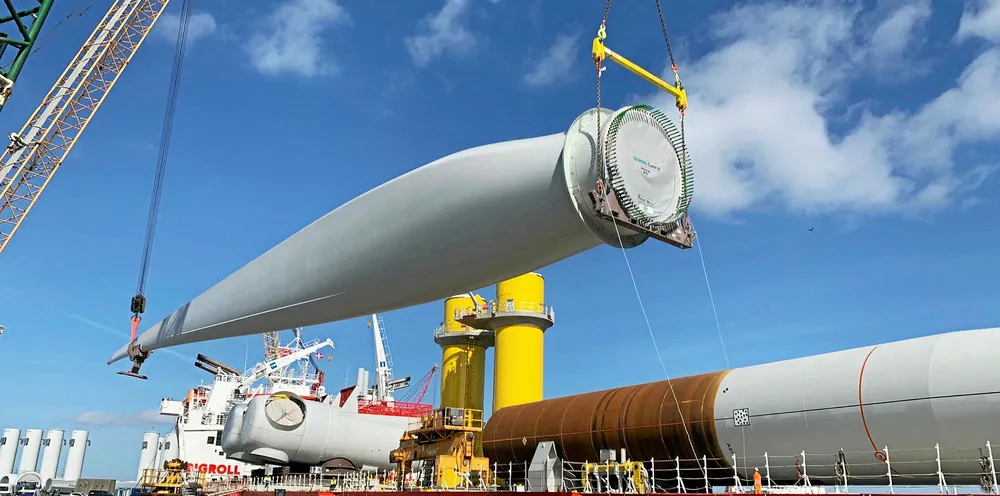'Regional cooperation is a must': trio of states form first US offshore wind alliance
Maryland, North Carolina and Virginia form Smart-Power tie-up to advance development of 6.8GW of capacity off Atlantic seaboard

Maryland, North Carolina and Virginia have formed the first US multi-state offshore wind alliance to advance development of 6.8GW of capacity they have committed to procure and to promote their adjacent geographies as a hub for the fast-growing industry.
Green is the new black. Subscribe to Accelerate
Get the market insight you need into the global oil & gas industry's energy transition – from the new newsletter from Upstream and Recharge. Sign up here
The Southeast and Mid-Atlantic Regional Transformative Partnership for Offshore Wind Energy Resources (Smart-Power) provides a framework for tripartite cooperation to promote, develop, and expand offshore wind energy, an industry supply chain and workforce.
The initiative could provide a template for bipartisan cooperation at the state level on clean energy that Democratic US presidential nominee Joe Biden wants to promote should he win next week’s national election.
It also is recognition by some east coast governors – belatedly for many sector investors –that their states can derive more economic and job creation benefits from regional cooperation that a go-it-alone approach that has largely prevailed until now. Every state, for example, can't have a turbine blade or nacelle plant the industry will need at scale.
The move comes one month after President Donald Trump issued an executive order banning new energy leasing – conventional and offshore wind – for a ten-year period starting 1 July 2022 on the federal outer continental shelf along Florida, Georgia, North and South Carolina.
The three states committed to work together to increase regulatory certainty, encourage manufacturing of component parts, reduce project costs through supply chain development, share information and best practices, and promote synergy between industry and the signatory jurisdictions.
Signing the four-page memorandum of understanding were governors Larry Hogan of Maryland, a Republican, and Democrats Roy Cooper of North Carolina and Ralph Northam of Virginia.
“Joining this multi-state partnership to expand offshore wind development will further our strong record of supporting responsible energy projects that provide jobs, clean air benefits, and energy independence,” said Hogan.
Northam added: “This agreement will help unlock our collective offshore wind resources and generate tremendous economic and environmental benefits for the region.”
The three leaders placed emphasis on collaboration to facilitate development of regional offshore wind resources through multiple actions such as reducing administrative burdens on the industry by clarifying, streamlining, and aligning, where appropriate, state regulatory requirements related to project construction and installation.
They agreed to form a Smart-Power leadership team with representatives from each signatory jurisdiction to undertake a range of actions to drive offshore wind development.
Significantly, the three states will coordinate communications with the US government, including the Departments of Defence and Interior which play pivotal roles in vetting offshore wind activity in federal waters on the outer continental shelf.
Until now, states have largely acted one-on-one with federal agencies, partly through inter-governmental renewable energy task forces led by the Bureau of Ocean Energy Management (BOEM), the federal industry regulator.
While helpful in identifying wind lease areas and minimising potential user conflicts, the task forces in some cases promote each state’s parochial interests with offshore wind.
Smart-Power, by contrast, aims to take a collective approach to areas of mutual interest such as identification and best use of regional assets; development and expansion of a regional supply chain; regional promotion to attract domestic and foreign investment; best practices and entering partnerships with a range of stakeholders.
The new alliance won quick approval from prominent wind energy groups.
“By adding multi-state coordination to their individual efforts, the three states will be able to more forward more efficiently to develop their infrastructure and local supply chains to unleash this brand-new American energy industry and the jobs and investments that come with it,” said Laura Morton, senior director of policy and regulatory affairs for offshore wind at the American Wind Energy Association.
Liz Burdock, CEO of Business Network for Offshore Wind, a Maryland-based industry advocacy group, said the move more evenly balances sector development across the east coast.